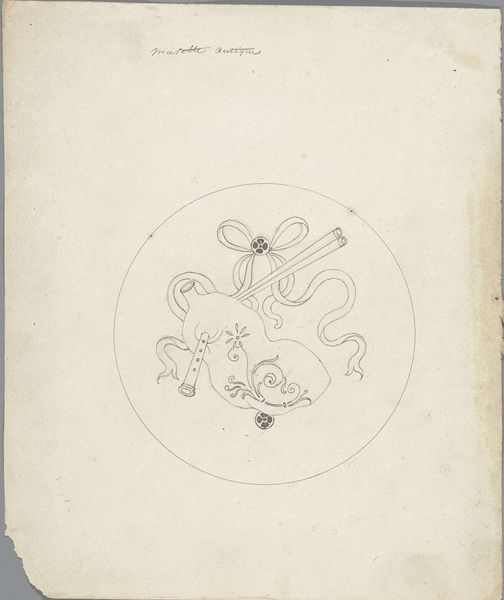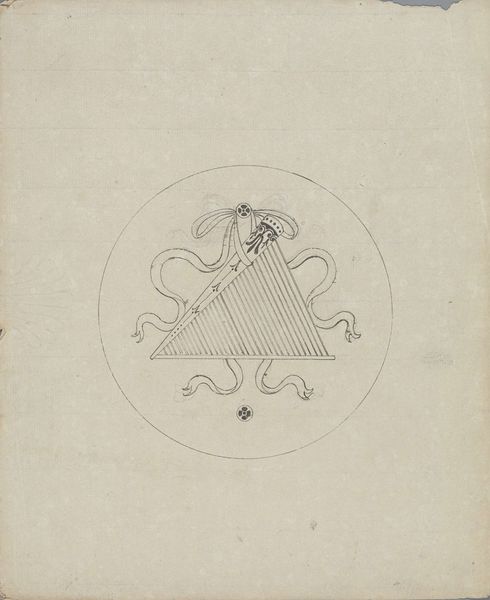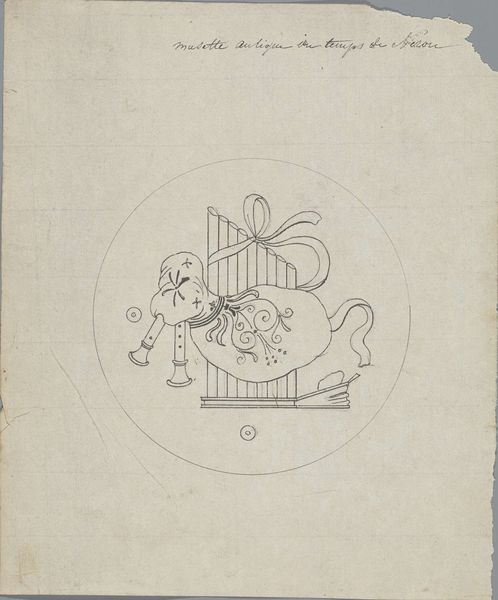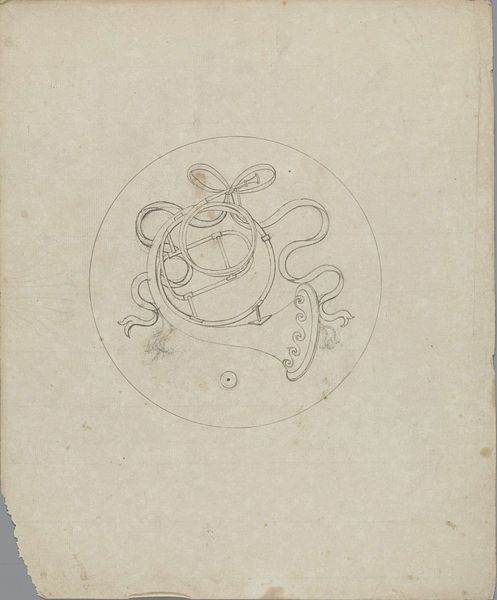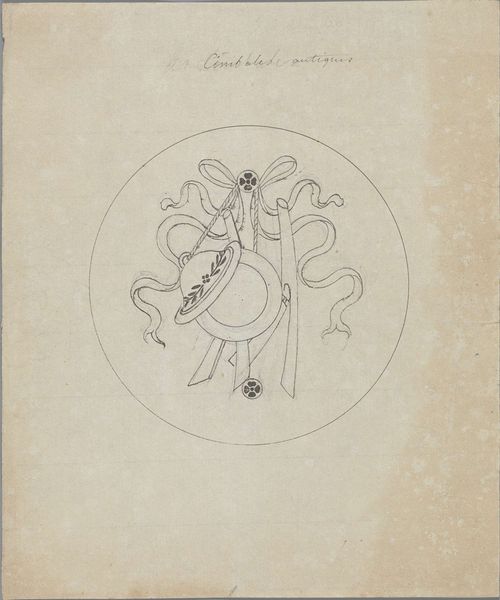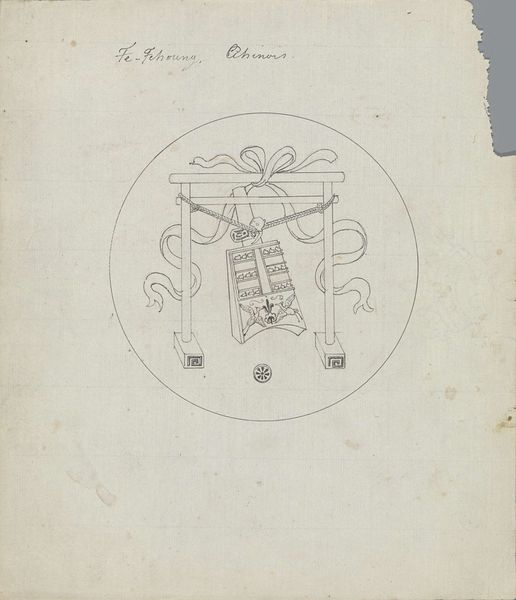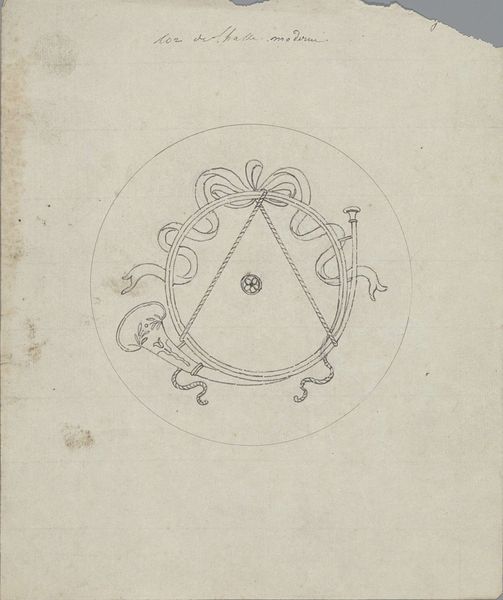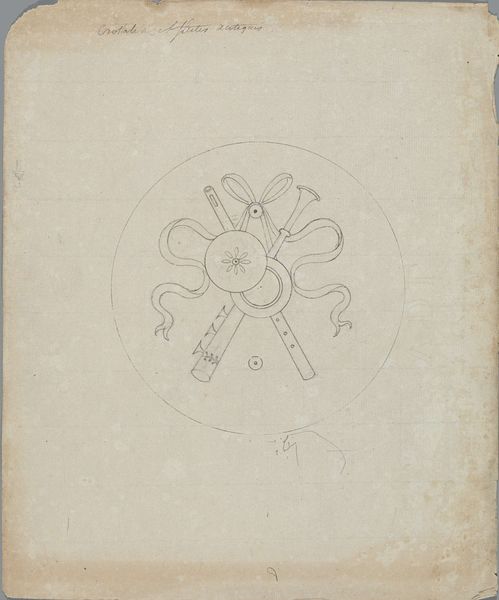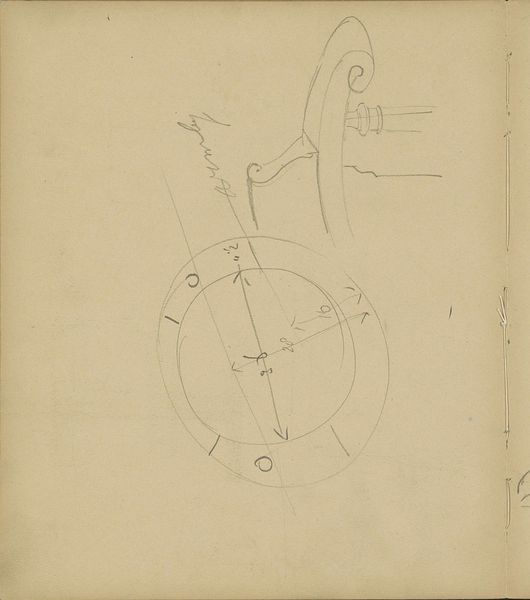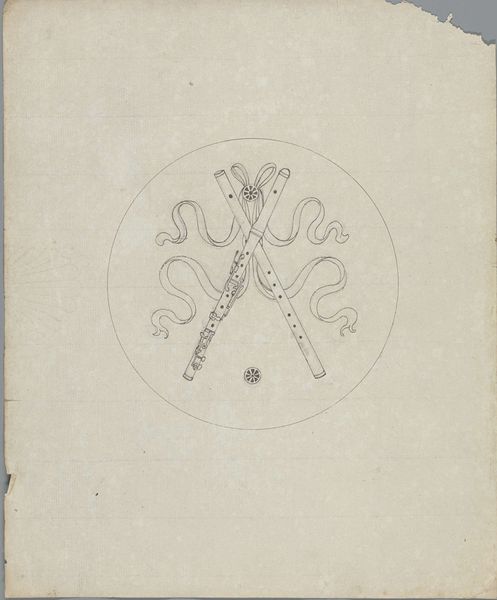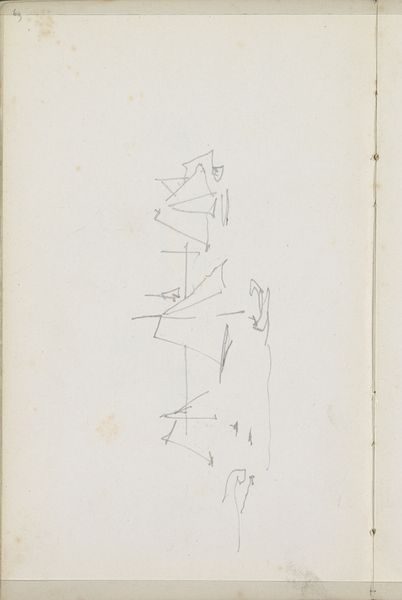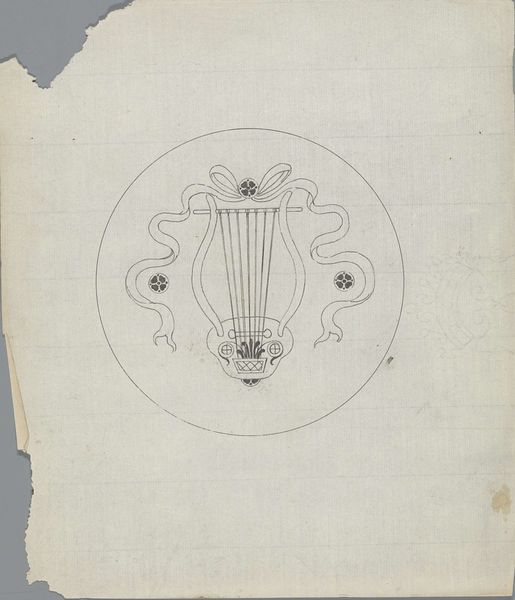
Instrument de cuivre, tambour, castagnettes et serinettes Nègres (Côte de Guinee) before 1828
0:00
0:00
drawing, ink
#
drawing
#
toned paper
#
light pencil work
#
quirky sketch
#
asian-art
#
sketch book
#
personal sketchbook
#
ink
#
idea generation sketch
#
ink colored
#
sketchbook drawing
#
storyboard and sketchbook work
#
sketchbook art
Dimensions: height 253 mm, width 208 mm, diameter 123 mm
Copyright: Rijks Museum: Open Domain
Editor: So, this is Pierre Félix van Doren's "Instrument de cuivre, tambour, castagnettes et serinettes Nègres (Côte de Guinee)," created before 1828. It's a drawing, and I see what looks like a collection of musical instruments rendered in ink. The composition, with the circle, makes it look like a crest or an emblem. What do you see in this piece? Curator: It strikes me as a fascinating, albeit troubling, artifact of its time. The title alone, with its use of "Nègres," immediately signals the problematic colonial gaze at play. We have to consider this image within the context of 19th-century European perceptions of Africa. It depicts instruments – drum, castanets – presumably encountered on the Guinea Coast, but they are presented almost as trophies or curiosities, devoid of their cultural significance. Editor: Trophies? I see what you mean. The way they're arranged feels more like a still life than a celebration of culture. Curator: Precisely. And what's absent is just as telling as what's present. Where are the people playing these instruments? Where is the vibrant musical tradition these objects represent? It's a representation *about* a culture, not *of* a culture. It flattens and objectifies. Does it bring to mind similar artworks we've discussed that further perpetuate damaging, dehumanizing views? Editor: It makes me think of how often non-Western art was – and sometimes still is – presented in museums without proper context, stripping it of its meaning and power. Curator: Exactly! This sketch serves as a potent reminder of the power dynamics inherent in representation and the urgent need for critical engagement with historical material. We must continue working to provide more accurate and sensitive frameworks for art historical analysis. Editor: This really changes how I see it. It's more than just a sketch of instruments; it's a document reflecting a very specific and biased worldview. Thank you.
Comments
No comments
Be the first to comment and join the conversation on the ultimate creative platform.


